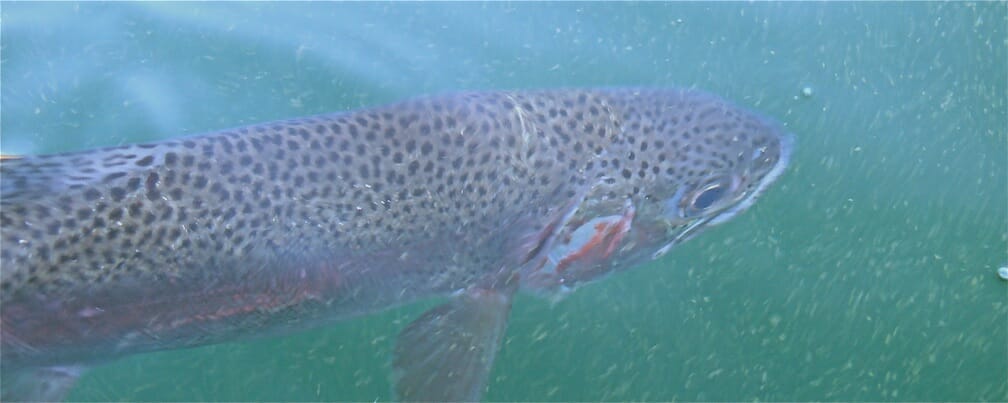I’m not much of a lake guy. Don’t misunderstand that statement. I like lakes as an idea. Fishing them, though, is problematic, mostly because the lakes I would relish fishing are well off the beaten track — I’m only willing to tote a float tube so far before I lose interest, and I’m only willing to go so deep before casting becomes akin to forced calisthenics.
But, like I said … I like the idea of lakes.
After that wordy introduction, what I have to say next probably won’t make much sense. But here goes anyway.
I got the chance to fish a sweet lake some years back, one that bristles with big, healthy rainbows that eat willingly and all through the water column. One that’s hidden from view and requires a bit of a leg stretch to reach, but one that makes the jaunt worthwhile, even with a tube on my back.
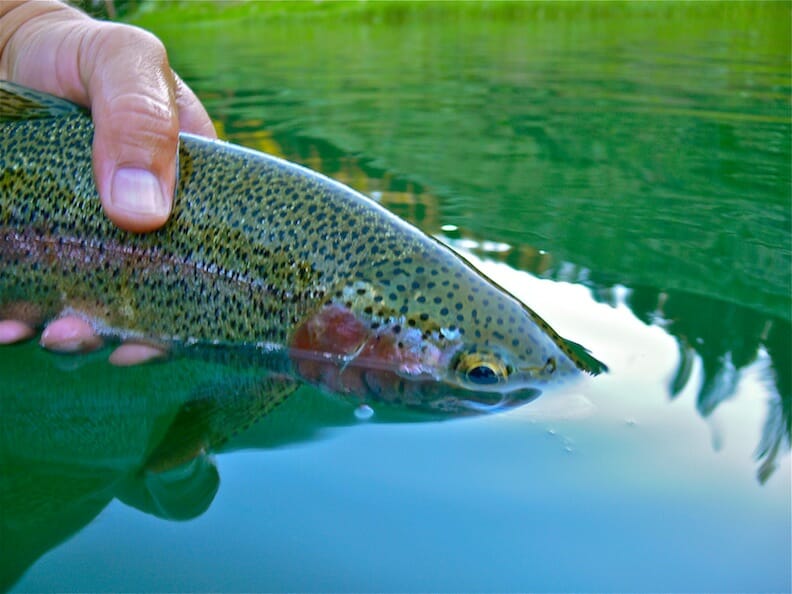
It’s the ideal alpine lake … all natural (even if its fish aren’t), and stunning to behold from a bluff above the water. Lined by healthy Montana firs and lodgepoles, this lake has that typical alpine lake drop-off. An angler could wade up to his or her waist about a dozen feet from the bank. After that … they’re swimming.
But with a float tube …
I own a float tube, and have for a dozen years or so. I traded an old, crazing bamboo rod for it when I moved back to the mountains from the Pacific coast in the late 1990s. (I’m ashamed to admit the rod brand — it’s likely that I got hosed down pretty good in that transaction). I probably use the tube once each year since, and that might be a bit of a generous estimate. Like I said, I’m not much of a lake guy.
But I loaded my tube on the back of my pickup one Friday and met a group of angling buddies in Montana, thinking, if nothing else, one of the guys might like to take it out for a little … yawn … lake fishing. I’d be back at the lodge enjoying a delicious gin and tonic and maybe swapping a joke or two while some poor sap kicked his way through clouds of mosquitoes in search of that one big fish.
I’d wait for the creeks. Moving water. Spunky trout. Action.
But after I got a look at the creeks, I figured I better get into “lake mode.” More accurately, I figured I better invent “lake mode,” because the action on the creeks was not to be. The previous winter delivered record snow to our corner of the world, and even then, in July, the creeks were still carrying runoff downstream to the Beaverhead.
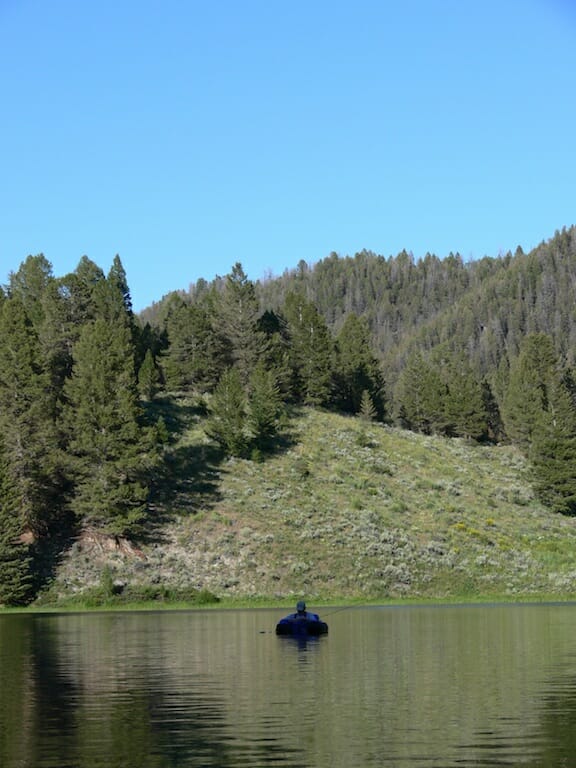
The lake, it seemed, was about all I could hope for in terms of seeing a trout attached to the end of my tippet.
And hope springs eternal … or so they say.
I sauntered down the little trail to the lake, the tricked-out tube (it was pretty fancy a dozen years ago or so) resting somewhat awkwardly atop my back. I wandered past the well-used put-in, figuring the farther I got from any place that looked well-used the better. Minutes later, decked out in waders (I haven’t worn waders since early spring) and fins, I stepped into the tube and began kicking my way across the deep, green lake.
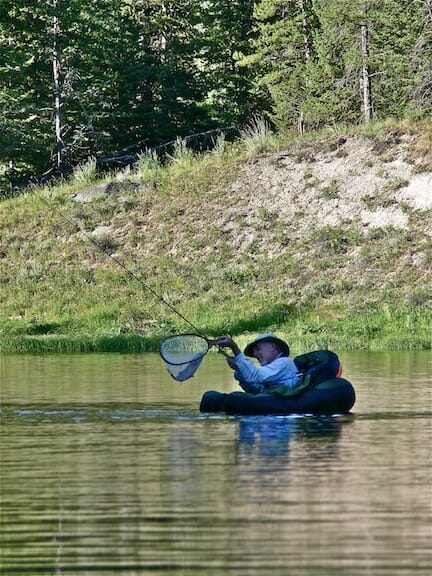
And for the first half of the day, lake fishing lived up to my expectations. At one point, I actually dozed off — I awoke when a family of river otters started splashing nearby, and that, I figured, was the coolest thing that would happen to me that particular day.
But then something hit my streamer. Something big. And it pulled really hard. And then it was gone.
This lake had a pulse. And I started fishing like a physician might start working on a patient, knowing there’s hope. And there was hope.
Minutes later, I saw the first rise, and while I wasn’t so optimistic as to tie a dry fly to my tippet, I did cast to the rise ring. Two strips later, and I was hooked up. Two minutes later, I released a healthy 19-inch rainbow, all spots and dipped in sweet rosé.
Then I began to fish with a purpose. I kicked over to the bluff along the lake’s western edge, figuring this is where the fish would congregate when the sun began to fade and the “evening hatch” would begin. The rises grew more frequent, more frantic. I’d see noses break the water, then dorsals and then tails. Big, beautiful tails.
I tied the dry on–a fluffy size 12 Adams. Big enough to see, and maybe a size bigger than the mayfly spinners I was noticing on the lake’s suddenly calm surface. A fish would rise. I’d guess which direction it was working, and I’d do my best to put my fly in its path.
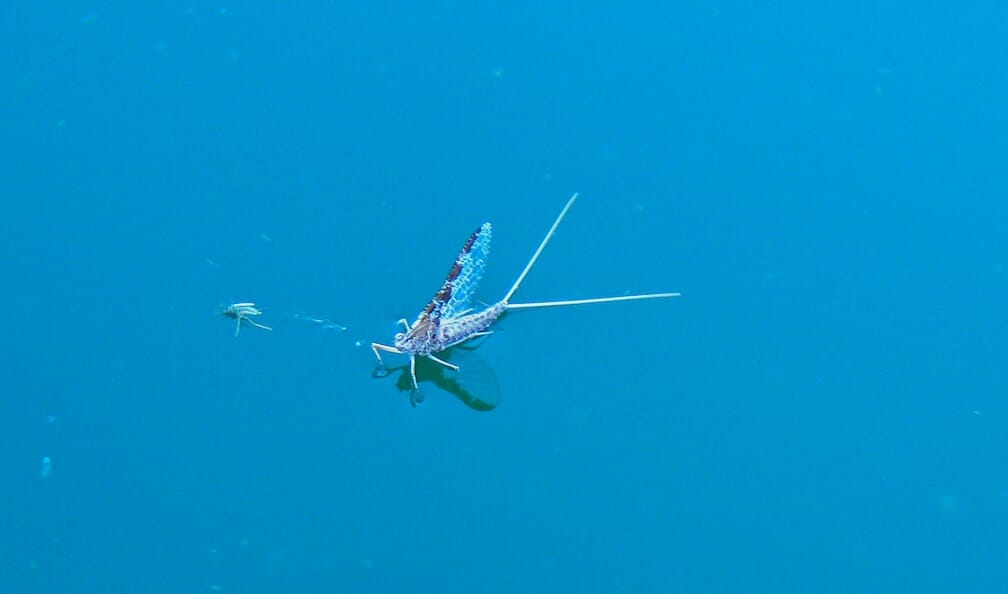
And then the hook-up. Gulpers on still-water lakes feed with abandon. They’re all about putting on weight, ingesting protein and then finding the next meal. Quickly. When they hit, it’s a determined hit. The line goes tight with the hook set, and then all hell breaks loose.
These rainbows fought like the devil, and they dove as if they were headed straight to his lair. Only one of the big fish bothered to jump and cartwheel — the others went deep and took line with them. And they were all big. Really big.
It turns out I found my “lake mode.” It was hidden behind something of a purist streak in my angling makeup, one that prefers moving water, dry flies cast upstream and fish more remarkable for their lineage than for their size. Lake mode took some digging to find, but there, behind the penchant for cheap light beer, fried cheese and reality TV, I found it.
And I liked it. It won’t be so tough to find next time…
